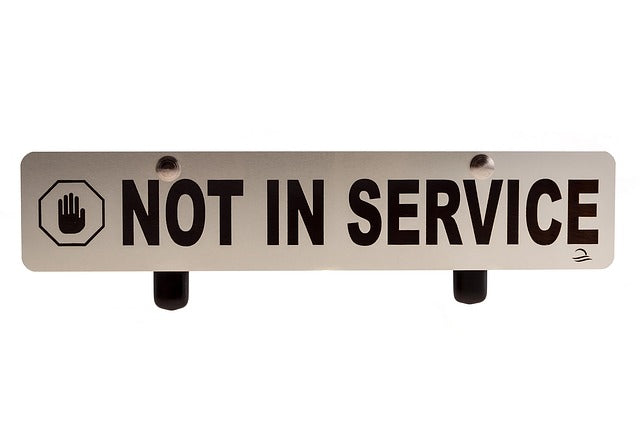ネットワークがダウンしたとき:電話ボットと代替電話回線がカスタマーケアをサポートする方法

今日の相互接続された世界では、ネットワークサービスの円滑な機能が日常業務にとって重要です。しかし、最近の地域ネットワークオペレーターNetcologneでの大規模な障害が示すように、最も先進的なネットワークでさえ重大な中断を経験することがあります。ケルン、ボン、デュッセルドルフ、レバークーゼン、アーヘン周辺の地域で数千の
このようなシナリオでは、堅牢な代替通信手段を持つことは単なる贅沢ではなく、必要不可欠です。この記事では、電話ボットや代替電話回線の統合、特にモバイルネットワークを活用することが、ネットワークの中断時に顧客ケアのための効果的なバックアップチャネルとして機能する方法を探ります。ネットワークの障害が予告なしに発生し、
2. ネットワーク障害がコミュニケーションに与える影響
ネットワークオペレーターであるNetcologneは、数十万人に電話およびインターネットサービスを提供する現代のコミュニケーションの基盤を形成しています。これらのネットワークがダウンすると、その影響は即座に広範囲に及びます:
2.1 重要サービスの中断
-
電話およびインターネット接続の喪失:
障害が発生している間、お客様 は緊急通信を含む重要なサービスへのアクセスを失います。Netcologneの事件では、110や112などの緊急番号さえもアクセスできず、人々はモバイルネットワークに頼らざるを得ませんでした。 ビジネス運営への影響:
企業にとって、ネットワークの障害はコミュニケーションチャネルの突然の停止を意味します。これにより、顧客からの問い合わせを逃したり、問題解決が遅れたり、全体的に顧客満足度が低下する可能性があります。
2.2 カスタマーケアへの波及効果
コール放棄の増加:
サポートラインに連絡を試みる際、サービスの利用不可や遅延が高いコール放棄率を引き起こし、顧客のフラストレーションをさらに悪化させる可能性があります。-
ブランドの評判リスク:
長時間の障害やその際の不十分なコミュニケーションは、特に顧客が十分にサポートされていないと感じる場合、企業の評判を損なう可能性があります。
これらの課題は、主要なサービスが失敗した際に介入できる代替チャネル(電話ボットやモバイルネットワークなど)を持つことの重要性を強調しています。
3. ネットワーク障害における電話ボットの役割
電話ボットは、音声を通じて顧客とのやり取りを処理するために設計されたAI駆動のシステムです。ネットワークの停止時に重要となるいくつかの主要な利点を提供します:
3.1 24時間365日の利用可能性と迅速な対応
電話ボットの主な利点の一つは、疲労なく24時間365日稼働できる能力です。停電中、人間のエージェントが圧倒されているか、連絡が取れない場合でも、電話ボットは顧客の問い合わせに対して即座に自動応答を提供できます。この迅速な対応は、重要な情報への即時アクセスを提供することで、顧客のフラストレーションを軽減するのに役立ちます。
3.2 一貫性と効率
電話ボットは一貫した標準化された応答を提供し、
3.3 コスト効率の良い運用
電話ボットを導入することで、カスタマーサポートセンターの運用負担を軽減できます。定型的な問い合わせを自動化することで、企業は人材を再配置し、個別の対応が必要なより複雑な問題に対処できます。これにより効率が向上するだけでなく、運用コストも削減されます—これは予期しない障害時において重要な考慮事項です。
3.4 電話ボットの限界
しかし、電話ボットが万能ではないことを認識することが重要です:
複雑な問い合わせの処理:
電話ボットはルーチンな質問の管理に優れていますが、人間の共感や判断を必要とする複雑または敏感な問題には苦労することがあります。-
正確性とパーソナライズ:
自動化は一貫性を確保しますが、人間のエージェントが提供するパーソナライズされたタッチが欠けている可能性があり、特定の状況で顧客の不満を招くことがあります。 -
バックアップシステムとの統合:
ネットワーク障害時の電話ボットの効果は、モバイルネットワークや代替電話回線など、他の通信チャネルとの統合にも依存します。
4.代替電話回線:モバイルネットワークの重要な役割
固定ネットワーク事業者が障害を経験する際、モバイルネットワークは通常機能し続けます。これにより、バックアップ通信チャネルとして代替電話回線を利用する機会が生まれます。
4.1 モバイルネットワークの利点
-
障害時の可用性:
モバイルネットワークは通常、固定電話サービスに比べてより回復力があり、分散型です。Netcologneの事件では、固定電話がダウンしている間、多くのお客様 が携帯電話を通じてサービスにアクセスできました。 -
迅速な切り替え:
適切なシステムが整っていれば、お客様 はモバイルベースのサポートにシームレスにリダイレクトできます。これにより、主要なシステムが失敗しても、通信は大きな中断なく続けられます。
4.2 モバイルバックアップシステムの構築
モバイルネットワークをバックアップとして効果的に活用するためには:
-
事前設定されたルーティング:
企業は、障害発生時に自動的にモバイルネットワークに通話を再ルーティングするようにシステムを設定する必要があります。これには、従来のサポートシステムとモバイル通信チャネルとの間の強力な統合が必要です。 -
専用モバイルサポートライン:
専用の携帯電話サポートラインを設けることで、ネットワークの中断時に信頼できる代替手段となります。これらのラインは、小規模なチームによって管理されるか、高い通話量を処理するために電話ボットシステムと統合されることができます。 -
ユーザーコミュニケーション:
お客様 ネットワーク障害が発生した場合の代替連絡方法について、事前に通知されるべきです。この積極的なアプローチは信頼を築き、主要サービスが中断された際にユーザーが驚かないようにします。
5. ケーススタディ: ネットコロンの障害
最近のネットコロンでの障害は、代替通信チャネルの重要性に関する貴重なケーススタディを提供します。2025年2月12日、ネットコロンのコアネットワークで大規模な障害が発生し、すべてのサービスが停止し、ケルン、ボン、デュッセルドルフ、レバークーゼン、アーヘン周辺の地域で数千の接続に影響を及ぼしました。47万人以上の固定電話
5.1 お客様 への影響
障害の間、影響を受けた
- 電話回線の利用不可:
固定電話を通じてサポートや緊急サービスに連絡できないことが広範なパニックと不安を引き起こしました。 - 代替情報チャネルの不足:
多くのお客様 は、モバイルネットワークやNinaのような警告アプリなどの代替コミュニケーション手段が導入されるまで、明確な指針がないままでした。
5.2 代替チャネルの役割
このシナリオでは、モバイルネットワークへの依存が重要であることが証明されました。
5.3 学んだ教訓
Netcologneの障害は、いくつかの重要な教訓を浮き彫りにしています:
- マルチチャネルサポートの必要性:
固定電話サービスのみに依存することはリスクが伴います。モバイルネットワークと電話ボットをコミュニケーション戦略に統合することで、これらのリスクを軽減できます。 - 備えの重要性:
事前に設定されたルーティングや代替連絡手段に関するユーザー教育を含むプロアクティブな計画は、混乱時の継続性を確保するために不可欠です。 - データ駆動型の改善:
停電中にデータを収集・分析することで、緊急プロトコルを洗練させ、全体的なシステムのレジリエンスを向上させることができます。
6. 停電時のカスタマーサポートを強化するための戦略的推奨事項
議論された課題と利点に基づき、ネットワークの停電時に効果的なカスタマーサポートを確保するためのビジネス向けの戦略的推奨事項を以下に示します:
6.1 ハイブリッドコミュニケーションモデルの実装
- 電話ボットと人間のサポートの統合:
電話ボットを使用して、ルーチンの問い合わせを処理し、停電時に即座にガイダンスを提供します。複雑な問題は迅速に人間のエージェントにエスカレーションされるようにします。 - モバイルネットワークへのシームレスな移行:
障害時に固定回線からモバイルネットワークへの通話を自動的にリダイレクトするシステムを開発します。事前に設定されたルーティングプロトコルにより、スムーズな移行が保証されます。
6.2 強力なバックアップシステムへの投資
- モバイルサポートライン:
固定ネットワークが故障しても運用を続ける専用のモバイルサポートラインを設立します。これらのラインは、高いボリュームを処理するために最新の技術を備えている必要があります。 - マルチチャネル統合:
ウェブフォーム、メールサポート、ソーシャルメディアなどの代替コミュニケーションチャネルが統合され、お客様 に簡単にアクセスできるようにします。 - 緊急コミュニケーションプラン:
緊急コミュニケーションのための明確で文書化されたプロトコルを策定し、定期的にテストおよび更新します。すべてのスタッフが停電時にこれらのプロトコルを迅速に実施できるように訓練されていることを確認します。
6.3 システム監視とデータ分析の強化
- リアルタイム監視:
ネットワークパフォーマンスと顧客インタラクションをリアルタイムで監視するシステムを実装します。問題の早期検出は、バックアップチャネルへの自動的なリダイレクトを引き起こすことができます。 - データ駆動型意思決定:
代替コミュニケーションチャネルの効果を評価するために分析を使用します。コール待機時間、放棄率、顧客満足度スコアなどの主要指標は、継続的な改善を導くことができます。
6.4 プロアクティブな顧客コミュニケーション
- 事前に通知する:
お客様
ネットワーク障害が発生した場合の代替連絡方法についてお客様 に教育します。ウェブサイト、モバイルアプリ、その他の顧客接点に情報を明確に表示してください。 - 障害時の透明な更新:
ネットワーク障害が発生した際には、複数のチャネルを通じて定期的に更新情報を提供し、お客様 に情報を提供します。透明性は信頼を築き、パニックを軽減します。
6.5 継続的な改善とトレーニング
- 定期的なシステム更新:
電話ボットやモバイルネットワークを含むすべてのバックアップシステムを最新の技術とベストプラクティスで更新してください。 - スタッフトレーニング:
カスタマーサポートチームのための継続的なトレーニングに投資し、ハイブリッドコミュニケーションシステムを効果的に管理できるようにします。自動サポートと人間のサポート間のスムーズな引き継ぎの重要性を強調します。
7. 結論
ますますデジタル化が進む世界では、ネットワークの障害が途切れのないカスタマーサポートに対する重大な脅威となります。最近のNetcologneの障害は、固定ネットワークオペレーターへの依存がどのように何千人もの
電話ボットは、24時間365日の利用可能性、迅速な応答、ルーチンの問い合わせ処理における一貫性を提供できる一方、モバイルネットワークは固定回線サービスが失敗した際の信頼できるバックアップを提供します。しかし、これらのソリューションの成功は、より広範なマルチチャネルサポート戦略へのシームレスな統合に依存しています。自動化の効率性と人間のエージェントの共感的なタッチを組み合わせたハイブリッドモデルを採用することで、企業はネットワークの障害の課題を乗り越え、高い顧客満足を維持することができます。
カスタマーケアのエグゼクティブにとって、戦略的な利点は重要です:運用コストの削減、応答時間の改善、継続的な改善を促進する貴重なデータ分析。しかし、これらの利点は、プロアクティブなリスク管理、堅牢なバックアップシステム、および
最終的に、レジリエントなカスタマーサポートの鍵は柔軟性と準備にあります。技術が進化する中で、企業はサポートシステムに継続的に投資し、洗練させる必要があります。そうすることで、主要なネットワークが失敗しても、信頼性が高く、タイムリーで共感的な支援を提供できるようになります。その結果、企業は混乱の際に自社の運営を守るだけでなく、
結論として、ネットワークの停止は今日の相互接続された世界において避けられないリスクである一方で、電話ボットとモバイルバックアップシステムの統合は強力な解決策を提供します。ハイブリッドアプローチを採用し、データ駆動の洞察を活用することで、組織はネットワークの混乱の影響を軽減し、シームレスな顧客サポートを維持し、最終的には逆境に直面してもより強くなることができます。
堅牢でマルチチャネルのコミュニケーション戦略を用いてネットワークの停止に備えることで、企業は技術的な混乱による課題に関係なく、顧客サポートが中断されず、効果的であることを保証できます。


